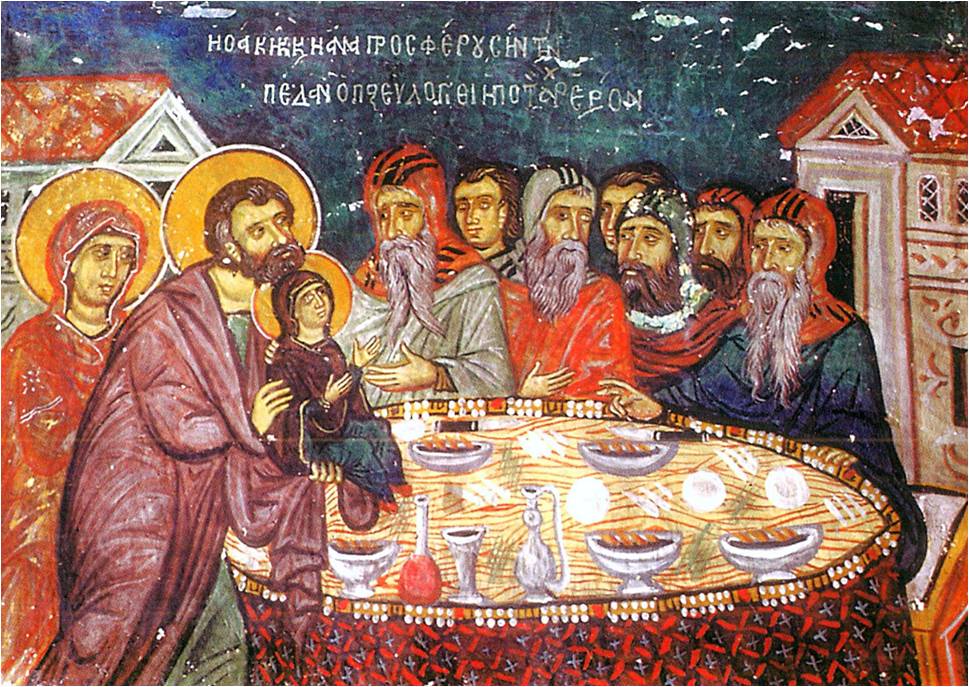Name - Origin
Chamomile (Kypri 1979 [2002²], entry σιμιλλούδιν,το, 431) / chrysanthemum (Kypri 1989, entry σιμιλλούδιν,το, 229) / an edible green, with yellow daisy flowers, the stem of which is edible (Kypri 1983 [2003²], entry σιμιλλούδιν,το, 96-97) / the plant Achillea aegyptiaca (Egyptian yarrow) and Achillea cretica (Cretan yarrow) (Gennadios 1914, 163)
ETYM. on similloudin: perhaps from the Latin similis = similar, because chamomile plants bear a similarity to each other, in the sense that they are all spring images.
Scientific name: Glebionis coronaria (formerly called Chrysanthemum coronarium) (Yangoullis 2009, entry σιμηλ(λ)ού(δ)ιν - σιμηλλίν - σελεμίδιν,το, 425) / Αχίλλειος η αιγυπτιακή και Αχίλλειος η κρητική (Gennadios 1914, 163), wikipedia.
They are called symillouthkia (milo=apple) because of the resemblance of their calyces to small apples. They are called Lazaroi because on the Saturday of Lazarus children would decorate themselves with flowers of these plants and would go from house to house chanting about Lazarus (Gennadios 1914, 163). This particular plant is also called Lazaros either because of the similarity of the colour of the flower to the paleness of the dead Lazarus or because, it was customary to cover a person with simillouthkia, who would impersonate the dead Lazarus while the song of Lazarus was sung and would be 'resurrected', when people would say to him: ‘Lazare devro exo’ (‘Lazarus, come out!’) (Kypri 1983 [2003²], entry σιμιλλούδιν,το 96-97).
Collected from January to April. The stems are edible after the skin has been removed. They are cooked with legumes.
Functional and symbolic role
It contains essential oil, camphor, borneol, resin and other ingredients. The flower, dry or fresh, helps to fight intestinal worms (Kantzilaris, 2007, 265)
In earlier years, on Saturday of Lazarus, children would decorate themselves with flowers of these plants and go from house to house singing Lazarus (Gennadios 1914, 163). A custom used to exist of wrapping a person in these plants in such a way that no part of his body, not even his face, could be seen. This Lazarus would be paraded from house to house by a group of young people. When they would begin to sing or recite the song, he would lie on the ground and pretend to be dead. He would be ‘resurrected’ upon hearing the words ‘Lazare devro exo’ (Lazarus, come out!). This custom was also observed in towns. In fact, Xenophon P. Pharmakidis recalls of this custom taking place in Limassol when he himself was a child (Kypri 1983 [2003²], entry σιμιλλούδιν,το 96-97).
Easter eggs are dyed yellow using these flowers.
Additional information and bibliography
Gennadios P. G. (1914), Λεξικόν φυτολογικόν: Περιλαμβάνον τα ονόματα, την ιθαγένειαν και τον βίον υπερδεκασχιλίων φυτών, εν οις και τα λόγω χρησιμότητος ή κόσμου καλλιεργούμενα, των οποίων περιγράφονται και η ιστορία, η καλλιέργεια, τα προϊόντα και αι νόσοι, Paraskevas Leonis Printing House, Athens.
Yangoullis K. G. (2009), Θησαυρός Κυπριακής Διαλέκτου. Ερμηνευτικό, Ετυμολογικό, Φρασεολογικό και Ονοματολογικό Λεξικό της Μεσαιωνικής και Νεότερης Κυπριακής Διαλέκτου, Βιβλιοθήκη Κυπρίων Λαϊκών Ποιητών, Theopress Publications, Nicosia.
Kantzilaris G. (2007), Το Καϊμακλί μέσα από το πέρασμα του χρόνου, New Coop of Kaimakli, Nicosia.
Kypri Th. D. (ed.) (1979 [2002²]), Υλικά διά την σύνταξιν ιστορικού λεξικού της κυπριακής διαλέκτου, Μέρος Α΄, Γλωσσάριον Γεωργίου Λουκά, Publications of the Centre for Scientific Research, XLI, Nicosia.
Kypri Th. D. (ed.) (1983 [2003²]), Υλικά διά την σύνταξιν ιστορικού λεξικού της κυπριακής διαλέκτου, Μέρος Β΄, Γλωσσάριον Ξενοφώντος Π. Φαρμακίδου, Publications of the Centre for Scientific Research, IX, Nicosia.
Kypri Th. D. (ed.) (1989), Υλικά διά την σύνταξιν ιστορικού λεξικού της κυπριακής διαλέκτου, Μέρος Γ΄, Γλωσσάριον Ιωάννου Ερωτοκρίτου, Publications of the Centre for Scientific Research, XIV, Nicosia.
Eleni Christou, Savvas Polyviou, Argyro Xenophontos
